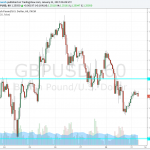Video Length: 00:06:19
A quick uptick in US Treasury yields the past 24-hours has rekindled memories of the 2013 ‘taper tantrum’ in bond markets when a sharp rise in yields proved to be symptomatic of a greater issue: investors were fleeing USD-based assets as the QE punchbowl was being taken away.
As history shows, the ‘taper tantrum’ was nothing more than nervous hands expressing uncertainty over the direction of monetary policy at a time when the economic recovery from the Global Financial Crisis was fragile. We’re in a very different set of circumstances today. To draw any other conclusions at present time would be irresponsible.
But it is worth reminding of why the rise in US Treasury yields matters, especially for risk markets (i.e. if US equities fall, so too will pairs like USD/CHF and USD/JPY). Trading and investing, are, after all, exercises in risk tolerance: how much risk are you willing to take on to achieve a desired level of return?
One way to answer this question is via a theory of equity valuation known as the “Fed Model” (an alternative would the “Yardeni Model”). The Fed Model compares the US S&P 500 earnings yield to the US Treasury 10-year yield. When stocks have a greater yield than bonds, the logic goes, you buy stocks.
The same logic dictates that if US Treasury yields rise enough, then market participants would favor bonds over stocks. This seems to be the very issue starting to bubble up in US assets now: US Treasury yields are starting to rise, and given that US equity markets are at historically-stretched valuation levels (via P/E or CAPE), investors are forced to reassess the risk that they’ve taken on (volatility has been low but it won’t stay this way forever).
If US yields rise quick enough in a short period of time, you could see a lot of nervous hands in equity markets reaching for the exit in a very disorganized fashion. The implications would be for a weaker USD/CHF and USD/JPY, as the old ‘risk on/risk off’ paradigm returned to FX markets.














Leave A Comment